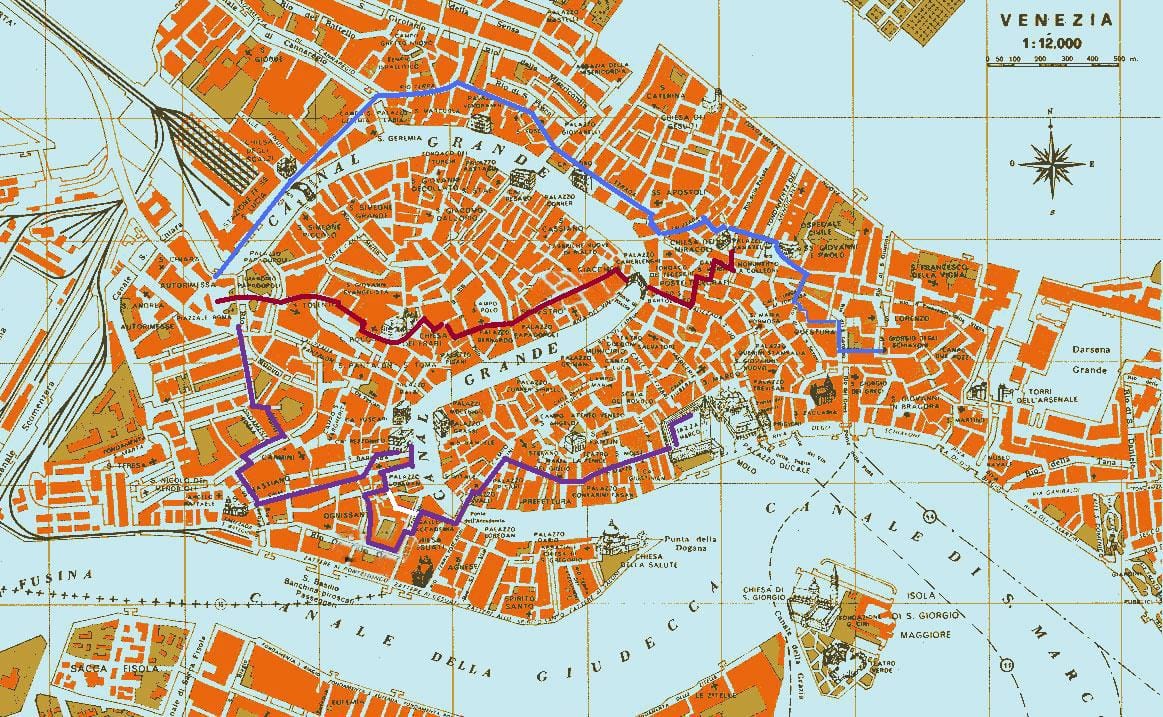Our second route, called the “Center”, will follow the Piazzale Roma – Rialto – San Lio itinerary.
It is a route that thousands of Venetians walk everyday, as it connects Piazzale Roma (the way into Venezia) to the heart of the city: Rialto.
With its antique shops and traditional market, it is the city core, where probably the spectacles were invented.
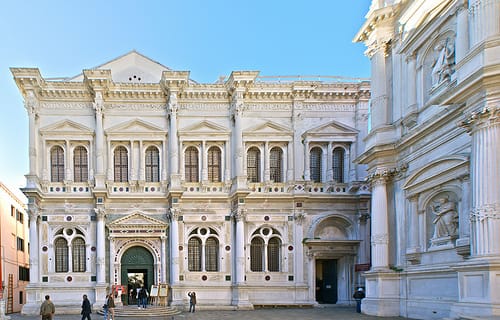
Leaving Piazzale Roma behind, walk across the Papadopoli bridge and its historical gardens heading to San Rocco. About six minutes later you will get to the homonymous Campo, where you can see the church (which sacred relics of the saint are resting in) and one of the oldest and most important “Schools” of Venice, the Scuola Grande
Rated as one of the richest in Venice, this “Scuola” stores a series of paintings by Jacopo Tintoretto between 1564 and 1588, Tiziano, Tiepolo and many others that make it compete with the Sistine Chapel in Rome. The school is open to people everyday except for New Year’s Day, Easter day and Christmas day, 9.00am to 5.30pm.
The destination of the specs’ collector is the upper room. The view on top of the stairs is just amazing. The upper room, with its vault covered by Tintoretto’s paintings, was furnished on the second half of the seventeenth century, by the artist Pianta il Giovane, with wood panels where a dozen of sculptures and a beautiful carved in wood bookcase can be seen.
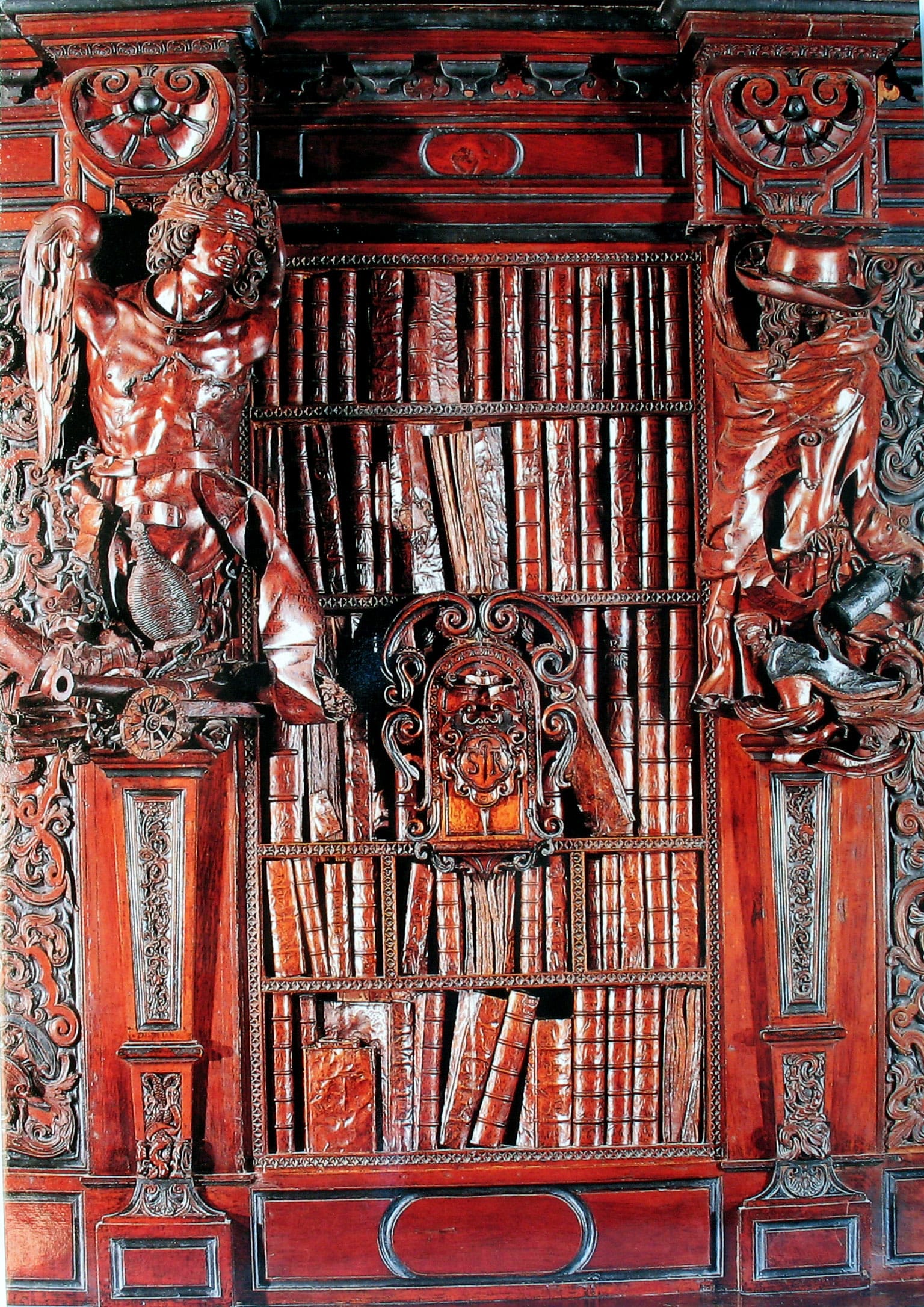
All the 64 books that make it, are represented standing on the back, except for one of them which is been left laying by its reader. On the book there are great perched glasses on their case.
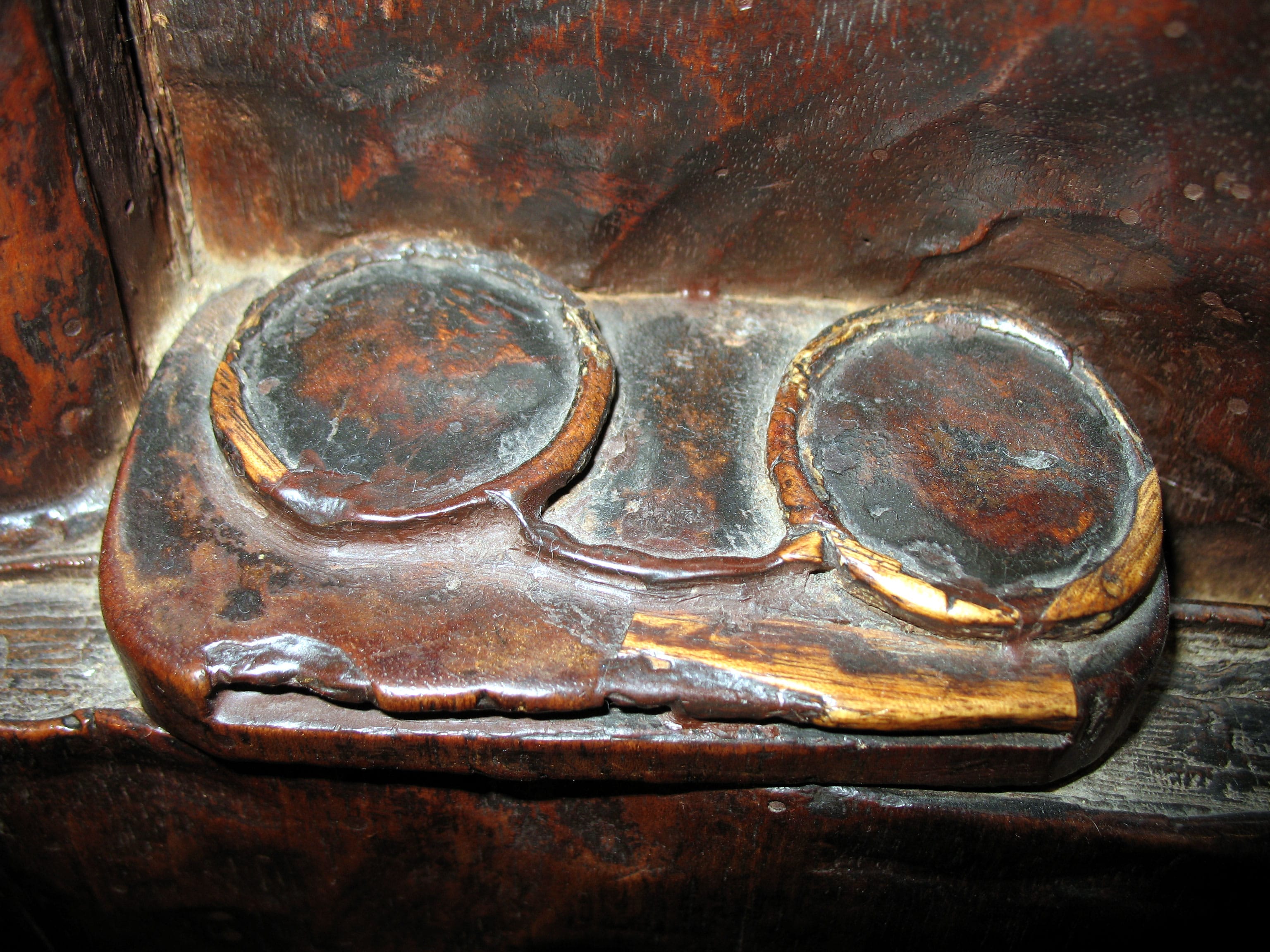
At a closer look they might recall English arc spectacles ( that are going to be made during the following century ), with a steel bridge and rings made of leather and horn. The case reminds tiny boxes of Nuremburg spectacles.
Looking at the sculptures along the wall, we can see the bust representing “Science”.

The bust stands on a book and lying on one of these there is another pair of glasses. The spectacles are placed on a bag case with the opening top and its shape recalls leather specs. Unfortunately the bridge is missing.
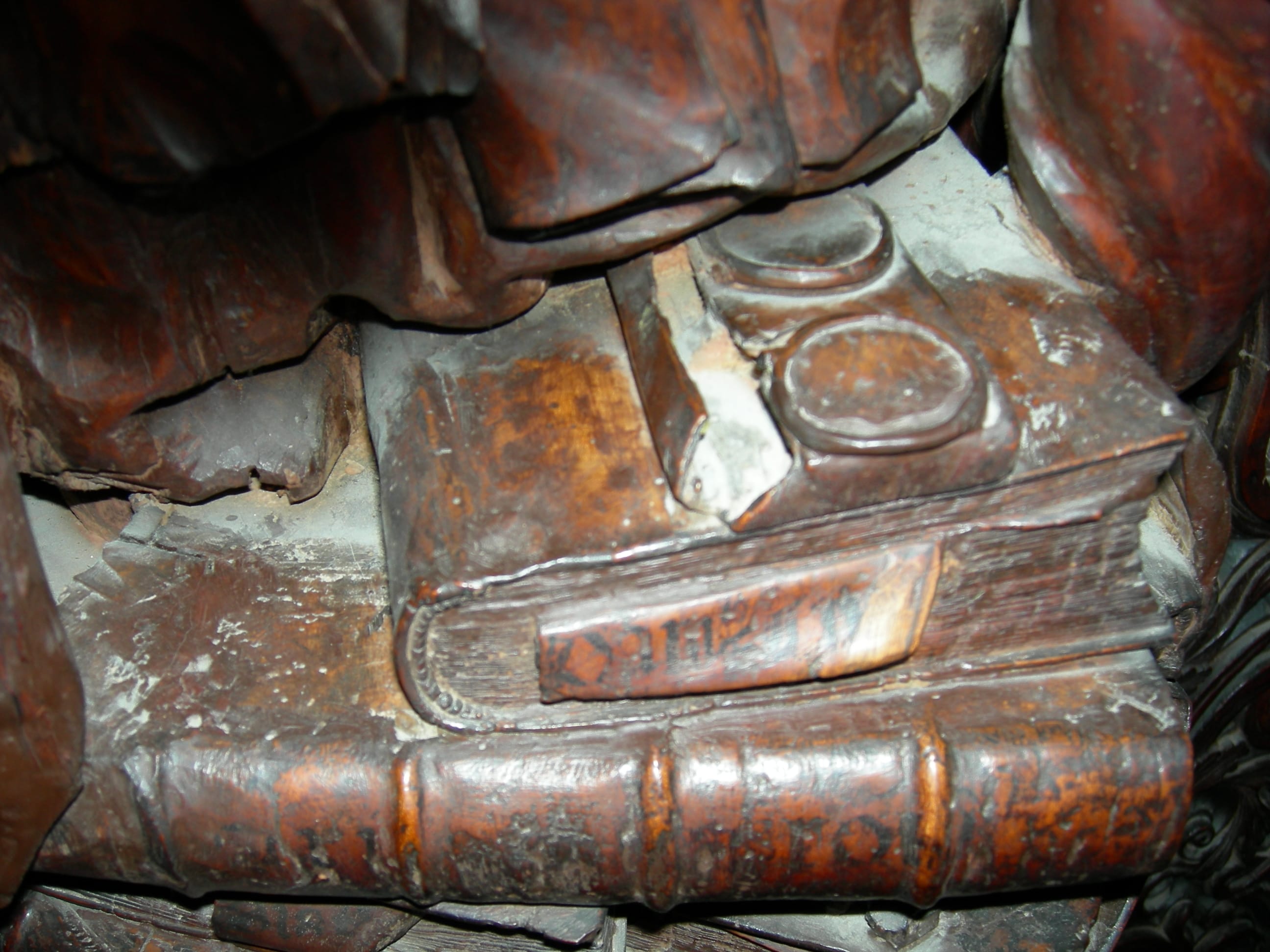
For realism and rarity, these two examples are worth a visit to this wonderful site.Right after this, just a minute away from Campo San Rocco, we would have the chance to see the Frari’s Church with its magnificent white marble monument devoted to Tiziano and Canova.
Beside the church, set in an ancient Venetian residence we could see a noble insigna: The collector’s attention is suddenly captured by the string that holds the shield.
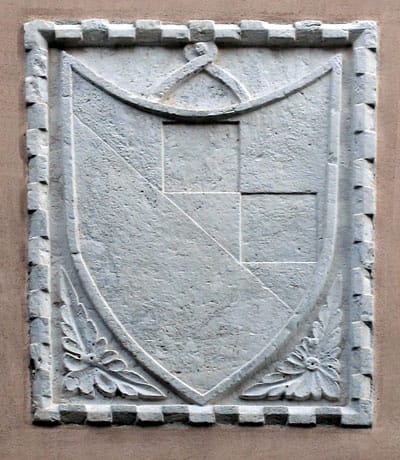

The memory runs at once marked by stone preserved in the Museum of Ancona, where he represented a couple of glasses of the ‘400.
We had a fantastic bridge spring, due to the same representation in the central pivot point. Teaching in the subject, it would not make any sense to think that the shield is suspended from a spring and so I think it is merely a way of representing the intersection of the two arms by the sculptors.

Just beside the Frari’s Church, there are the state archieves, where the “Chapters of GlassArt” are stored. These “Chapters” are rules for those who manufactured crystal, divided in chapters, where it is written about eyeglasses lenses as well as magnifying glasses. These are the oldest documents so far.
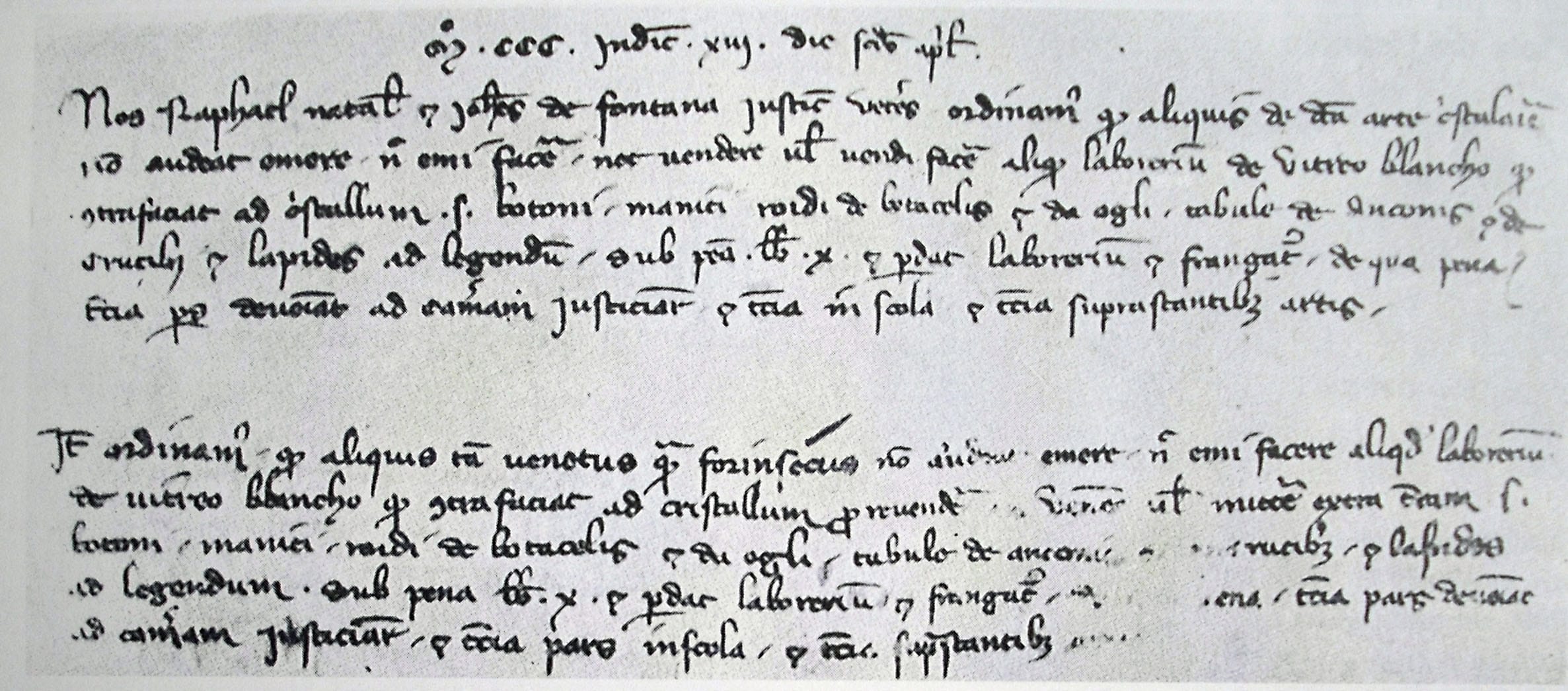

Another 10 minutes further on, direction Rialto, we can find two of the three streets in Venezia, that carry the art of Optics in the name, as well as some representations of antique spects from over the last 30 years.
As you arrive to “Rugheta del Ravano”, better known as “Ruga Rialto”, you can come and visit our shop. In the floor it is placed a representation of Cardinal Ugo da Provenza ( First representation of a mano wearing specs in history, ndr.).

You will always be welcome and you can take a look at our private collection, which is updated every three months.

Just 50 meters away, placed in the ancient market of Rialto, on your left you can take a picture of a tiny street called “Ramo dell’ochialer” and just behind it, ”Calle dell’ochialer”. The Venetian topography is dated back to the end of 1500, and, as reported by Tassini in his “Venetian Curiosity”, in the chronicles of October 12, 1619 in this area there was a spectacles maker known as Zuane (Giovanni) Ochialer who lost his son Battista (Bapthyst), due to smallpox. It could be a coincidence, an homonymy, or it could be the same person, but in another report in 1610 it is written about Zuane Ochialer related to another accident. We will talk again about this subject in our southern route. Fresco representation “Rialto”


Just a few meters further ahead there is the “Sotoportego Ruga dei Oresi” ( sotoportego is a covered alleyway ) which had been restored some years ago and while cleaning, the frescoed vaults had re-appeared. Unfortunately just a few frescoes have been recovered and there is just one section dedicated to the arts and crafts of Venice. However, there is no trace of glasses on what remains to us.
Walking down the sotoportego, where nowadays just a few activities are still working, we could find a bijoux jewellery store, named “Rialta”, which had been restored and re-painted about 30 years ago. The scenes represented on the walls were set in the 18th century. Among all the characters, a violinist was wearing a pair of glasses. Unfortunately all the paintings have now been removed regardless, with no care for the past, by the estate agency that now is set there.
On the left side of the sotoportego, we will get to Campo S. Giacometto, where we can see the oldest church in Venezia, which once was the seat for the art of goldsmiths.
Now we just have to walk across the monumental Rialto Bridge and walk past Campo San Bartolomeo, heading for San Lio. Guerra Pharmacy has an old print on the window facing the Campo, named the alchemist by Johan Stradanus. The glasses on the alchemist’s nose are very well represented.
Our journey continues to Campo Santa Marina. Walking ahead, direction San Giovanni e Paolo (where the main hospital is) towards St. John and Paul, from the second bridge you walk across, you can photograph the building on your left belonging to Van Axel family (nursery-school today), which we have a piece of our collection from.
The End



